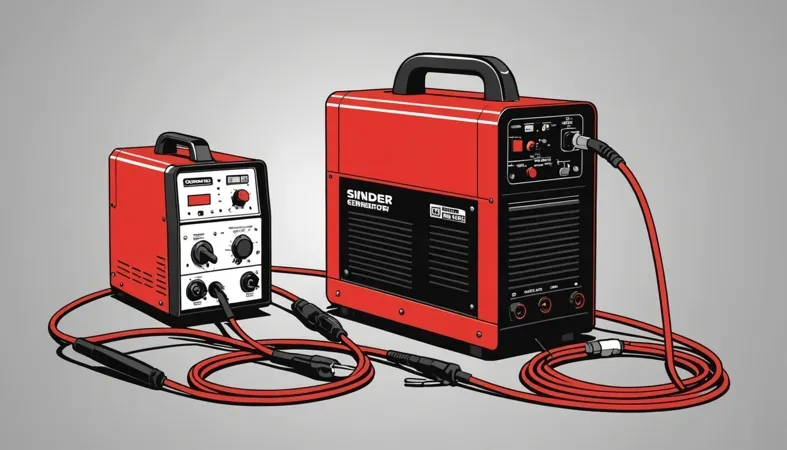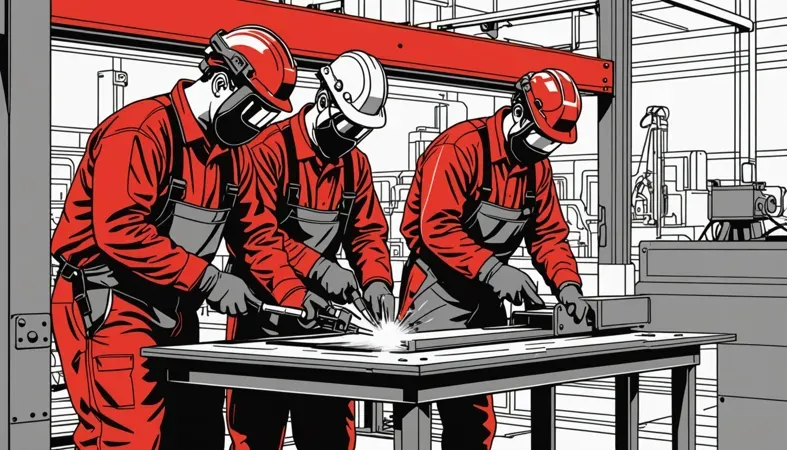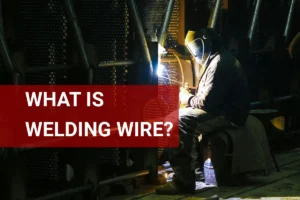Can You Run a Welder Off a Generator? Essential Guide to Generators and Welding
Published on: March 20, 2025 | Last modified: March 4, 2025
By: Joe Carter
A generator is a machine that converts mechanical energy into electrical energy. Simply put, it provides power for tools and equipment when you need it most.
I’ve received numerous inquiries about can you run a welder off a generator. This question’s important because using a generator improperly can lead to damage or injury. From my experience, it’s crucial to match the generator’s power output with the welder’s requirements to ensure smooth operation.
In this guide, you’ll explore essential aspects like what a generator is, types of generators suitable for welding, prerequisites before starting, safety tips, and factors affecting performance. Also, I’ll cover common problems, aftercare, benefits of using a generator for welding, and some alternative solutions. You’ll learn how to ensure your setup is efficient, answering questions like can a generator run a welder and how to troubleshoot potential issues.
Contents
- Can You Run a Welder Off a Generator?
- What is a Generator?
- Types Of Generators for Running a Welder
- Generator Requirements for Different Types of Welders
- Steps to Running a Welder Off a Generator
- Before You Start (Prerequisites)
- Safety Tips
- Types Of Welding Powered by a Generator
- Factors Affecting the Ability to Run a Welder Off a Generator
- How to Address Common Problems
- Aftercare, Inspection, and Advanced Tips for Running a Welder Off a Generator
- Top Benefits You Can Expect From Using a Generator for Welding
- Real-world Uses for Running a Welder Off a Generator
- Are There Any Alternatives to Running A Welder Off A Generator?
- Frequently Asked Questions (FAQs)
- Conclusion
- References
Can You Run a Welder Off a Generator?
Yes, you can run a welder off a generator. But it’s crucial to match the generator’s output to your welder’s requirements. Opt for a generator with at least 5000 watts (5 Kw) for a 110V welder. This ensures smooth operation without damaging equipment.
Using the correct welding technique is just as important as having the right equipment, and mastering how to weld pipe with 6010 electrodes can improve your welds significantly.
What is a Generator?
A generator is a device that converts mechanical energy into electrical energy. It typically works on the principle of electromagnetism. Most generators use a rotating coil of wire within a magnetic field to produce electric current. They come in various sizes, from portable models providing around 1,000 watts (1 Kw) to large generators that produce over 100,000 watts (100 Kw).
I often get asked, “Can you run a welder off a generator?” In my experience, it’s a common question among welders. I remember setting up my portable generator for a quick job and being impressed by how well it handled my equipment.
I frequently used a generator to power my welder at remote sites, saving me time and hassle. If you’re considering running a 220V welder off a generator, it’s crucial to match the generator’s output with the welder’s requirements. Check the wattage first; a typical 220V welder may need around 5,000 watts (5 Kw), so plan accordingly.
Types Of Generators for Running a Welder
What types of generators can power a welder?
-
Portable Generators
These are lightweight and easy to move. You can use them for welding, but check the wattage! A portable generator should have at least 4,000 watts for a 220V welder or 2,000 watts for a 110V welder.
-
Inverter Generators
Inverter generators are quieter and provide clean power. You can use them for welding! Ensure it produces enough wattage; typically, 3,000 to 4,500 running watts is adequate.
-
Standby Generators
These are permanent and automatically activate during outages. They can handle welding tasks easily. Make sure the generator’s capacity exceeds that required by your welder, often above 5,000 watts.
-
Diesel Generators
Diesel generators are powerful and suited for heavy tasks. They can run a welder efficiently! Your diesel generator should produce at least 5,500 watts for heavy-duty welding.
-
Gasoline Generators
These are common and run on gasoline. You can use gasoline generators for welding! Ensure it can handle consistent start-up and running watts, ideally above 4,000 watts for welders.
We’ve wrapped up the different types of generators for welding. Next up, we’ll look at generator requirements for various welders.

Generator Requirements for Different Types of Welders
Understanding specific requirements for various welders ensures you choose the right generator.
| Welder Type | Voltage (V) | Minimum Starting Watts (W) | Recommended Generator Size (W) |
|---|---|---|---|
| MIG Welder | 110 – 220 | 2000 – 5000 | 5000 – 7000 |
| TIG Welder | 220 | 3000 – 5000 | 6000 – 8000 |
| Stick Welder | 220 | 5000 | 7000 – 9000 |
| Plasma Cutter | 220 | 5000 | 7000 – 10000 |
| Flux-Cored Welder | 110 – 220 | 2000 – 5000 | 4000 – 6000 |
These values help you assess what generator to use. Always opt for a generator with a wattage above the minimum to handle surges when starting up your welder. It’s better to be safe than sorry when it comes to your equipment! Recognizing the risks involved with welding is crucial for safety and an essential concept to understand is what is weld flash.
That covers generator specifications for various welder types. Let’s now take a look at the process of using a welder with a generator.
Steps to Running a Welder Off a Generator
We’ll cover steps to efficiently use a generator with a welder.
-
Check Power Output
Start by confirming your generator’s wattage. Most welders require a specific power rating. For example, a 220V welder needs about 5000 watts (5 Kw) to start. Ensure your generator matches this or can handle the load with some cushion.
If you’re using a smaller welder, like a 110V model, it can run on a generator with as little as 2000 watts (2 Kw). Check if your generator can supply enough amps, too.
-
Select the Right Generator Type
Choose the appropriate generator for your welder. Inverter generators work well for sensitive electronics and can handle welding loads. Traditional generators are simpler for heavy-duty welding, especially with a 220V welder. It’s crucial to understand the potential skin risks associated with welding exposure, such as whether you can get sunburn from welding.
If you’re a weekend warrior needing portability, consider a combined generator-welder unit, as they are designed to work together seamlessly.
-
Match Output Voltage
Ensure the generator’s output voltage matches your welder’s requirements. A 220V welder needs a generator rated for 220V; using a lower voltage can damage your equipment.
Check this on the generator’s panel. Generators with multiple voltage settings provide flexibility; just switch it to match your welding needs.
-
Make Connections Securely
Connect the welder to the generator using proper connectors. Use a heavy-duty extension cord rated for your welder’s amperage. Using the wrong gauge can lead to overheating and hazards.
Double-check your connections before starting. Loose connections can cause voltage drops, affecting the welding process and resulting in poor quality welds.
-
Test Run the System
Finally, initiate a test run. Start at a lower setting to observe how the generator holds up. Gradually increase to your desired current, checking for any power fluctuations.
Monitor the generator for sounds and performance. If you notice any strain, back off immediately. It may indicate your generator isn’t meeting the welder’s demand.
So far we covered the process of operating a welder with a generator. Next, let’s look at the essential prerequisites.
Before You Start (Prerequisites)
What do you need to run a welder off a generator?
- Generator: You need a generator like the Honda EU6500iS, which produces 6,500 watts (W) and can run most welders.
- Fuel: You’ll need fuel, such as unleaded gasoline. This generator uses about 0.95 gallons (3.6 Liters) per hour at half load.
- Extension Cord: A heavy-duty extension cord, like the Southwire 50-ft (15.2 M) 10/3 gauge, is essential to reach your work area safely.
- Welding Machine: Consider a MIG (Metal Inert Gas) welder, like the Lincoln Electric MIG200, which requires roughly 200-250 volts (V) for efficient operation.
You should now have a good understanding of the necessary prerequisites. In the next part, we’ll discuss important safety tips.
Safety Tips
Let’s explore essential precautions when running a welder off a generator.
- Check Load Capacity: Ensure the generator can handle the welder’s wattage, at least 5,000 Watts (5 Kw).
- Ground Correctly: Proper grounding prevents shocks and is crucial for safe operation. Use a ground rod, like an 8-foot copper rod.
- Use Adequate Fuel: Use the correct fuel for your generator type; diesel isn’t compatible with gas units. Keep 5 gallons (18.9 Liters) available.
- Monitor Generator Temperature: Running a welder heats up generators; ensure airflow is unobstructed to prevent overheating, which can significantly shorten lifespan.
Remember, safety precautions aren’t just rules; they’re vital for your well-being!
Types Of Welding Powered by a Generator
Let’s explore the types of welding you can perform with generators. We’ll cover MIG Welding, TIG Welding, Stick Welding, Plasma Cutting, and Flux-Cored Welding.
-
MIG Welding
MIG (Metal Inert Gas) welding is popular for its ease of use. You can run a MIG welder on a generator with at least 3000 watts (3 Kw) for optimal performance. This process uses a wire feed that melts the metal, making it suitable for various materials, especially when using the right welding machines for the job.
Understanding common issues such as what causes crater cracks can help improve welding quality and prevent potential defects.
-
TIG Welding
TIG (Tungsten Inert Gas) welding offers precision and control. To use this method with a generator, ensure it provides at least 3000 watts (3 Kw) as well. This type of welding is ideal for thin materials and produces clean, high-quality welds. When working in metal fabrication, using efficient techniques to remove unwanted connections is crucial; discover effective ways to cut unwanted welds.
-
Stick Welding
Stick welding is another versatile method. You can run a stick welder off a generator with around 5000 watts (5 Kw) output. It uses a consumable electrode and is great for outdoor welding since it’s less affected by wind. Proper grounding is critical for safety and efficiency in the welding process, and you can find detailed instructions on how to ground a welder effectively.
-
Plasma Cutting
Plasma cutting slices through metals with precision. A plasma cutter requires a generator that outputs at least 5000 watts (5 Kw). It’s efficient and works well for thicker materials when you need to cut quickly.
-
Flux-cored Welding
Flux-Cored welding combines ease and flexibility, similar to MIG, but uses a tubular wire. A generator with a minimum of 3000 watts (3 Kw) is necessary for efficient operation. It’s excellent for outdoor work due to its self-shielding capabilities.
Factors Affecting the Ability to Run a Welder Off a Generator
What factors influence running a welder with a generator effectively?
-
Generator Output Power
Generator output power is critical. Look for a generator with at least 5,000 watts (5 Kw) to run a typical 220V welder.
-
Welder Input Requirements
Your welder’s input needs dictate your generator choice. For example, a 140 amp welder usually requires about 5,500 watts for optimal operation.
-
Type Of Welding Process
Consider the welding process. Stick and MIG welding require different power levels, which impacts your generator choice. For example, a MIG welder often demands more current than a stick welder.
-
Electrical Load Management
Manage your electrical load wisely. Excessive load can overload the generator, causing it to shut down or damage the welder. Keep the total output under 80% of the generator’s rated capacity.
-
Coil Efficiency
The generator’s coil efficiency matters. More efficient coils reduce energy loss, ensuring the welder receives enough power without interruptions.
How to Address Common Problems
Let’s look at issues specific to your generator.
-
Insufficient Power Supply
Your generator might not provide enough power for your tools. Check the wattage rating; it should exceed your load (E.g., A Welder Often Needs 2,000 to 3,500 Watts). Upgrade if it’s insufficient.
-
Voltage Fluctuations
If you see inconsistent voltage, it could affect your welder’s performance. Test with a multimeter. Stabilize by adjusting the governor or load balance.
-
Overheating Issues
Your generator might overheat during extended use. Ensure proper airflow and check coolant levels. If the temperature exceeds 50°C (122°F), shut down to cool.
-
Incompatible Equipment
Using a generator that doesn’t match your welder’s specifications can lead to failure. Verify the output types (AC/DC) and voltage levels. Use the appropriate adapters if necessary.
-
Generator Maintenance Challenges
Neglecting upkeep can cause problems. I recommend checking oil levels, filters, and spark plugs weekly. Regular maintenance can significantly enhance longevity.
Aftercare, Inspection, and Advanced Tips for Running a Welder Off a Generator
Here are crucial aftercare, inspection, and expert tips to enhance safety and efficiency when using a generator for welding.
Aftercare Tips
After running a welder on a generator, don’t just shut it off. Let it cool for at least 30 minutes to prevent damage. Check the oil level immediately after use. Change the oil every 25 operating hours for optimal performance. It’s also crucial to know the best practices for welding burns to ensure safety on the job.
Inspection Items
Regularly inspect connections and cable integrity. Look for signs of wear on the cables; use 10 AWG (American Wire Gauge) wiring to minimize resistance. Check fuel levels and maintain at least a 20% reserve to avoid stalling—regular maintenance has kept my Generac GP6500 running smoothly.
Expert Tips
Advanced users, prioritize your generator’s load capacity before connecting the welder. Don’t exceed 80% of the generator’s rated wattage to accommodate surge demands. Using higher-quality fuel can enhance performance—I’ve noticed a difference with Shell V-Power. Monitor voltage output regularly; a multimeter helps spot fluctuations quickly.
Top Benefits You Can Expect From Using a Generator for Welding
The main benefit of using a generator for welding is flexibility. I often used it for on-site jobs where electricity wasn’t available.
Moreover, you’ll enjoy a consistent power supply, easy portability, fuel efficiency for cost savings, and the ability to work in remote locations without hassle.
Real-world Uses for Running a Welder Off a Generator
I’ve used a generator for projects in tight spaces. However, it has many applications, such as:
- Mobile Welding: Field repairs on construction sites. Generators provide flexibility and allow welding anywhere. It’s very popular with contractors.
- Pipeline Welding: Powering welders in remote areas. Generators ensure you can finish jobs where utility power isn’t available. This is essential in the oil and gas industry.
- Emergency Repairs: Quick fixes for trucks and machinery during unexpected breakdowns. Generators keep you operational during downtime, which is a lifesaver for many repair shops.
- Artistic Projects: Sculptors using welders on-site. Generators enable metalwork in outdoor installations, becoming popular among local artists for their versatility.

Are There Any Alternatives to Running A Welder Off A Generator?
If using a generator isn’t your go-to solution, consider a dedicated welding machine with lower power requirements, such as a Lincoln Electric K2278-1. This allows you to work off regular household outlets, simplifying your setup. Another option is a portable inverter welder like the Everlast PowerARC 140, which runs efficiently on less power. Techniques for improving weld quality can help minimize defects in your projects, so explore how to avoid spatter in welding to enhance your results.
.
For larger projects, look into a conventional power solution, like direct grid access or a bigger stationary generator, such as a Generac GP7500E. Depending on your task, these methods can keep your workflow smooth and reliable. From my experience, selecting the right tool for the job saves time and sparks joy in your work.
Frequently Asked Questions (FAQs)
Now let us look at some common questions I typically get asked.
What Size Of Generator Do I Need to Run a Welder?
You need a generator sized appropriately to run a welder, typically between 5000 to 7000 watts. This range ensures the generator can handle the starting wattage required; most welders draw 2 to 3 times their rated amperage at startup. It’s also important to consider the health risks associated with welding and take steps to prevent cancer from welding.
Will a 3500 Watt Generator Run a Welder?
No, a 3500 watt generator generally won’t run a welder effectively. Welders often require 6000 watts or more at startup; falling short might cause the generator to overload, shut down, or damage the welder.
Will a Generator Damage a Welder?
Yes, using the wrong generator can damage a welder. If the generator can’t supply stable voltage and amperage, it may lead to overheating and component failure in your welder.
Will a 7000 Watt Generator Run a Welder?
Yes, a 7000 watt generator typically can run a welder. It provides enough output to handle most welders, allowing for both normal operation and startup surges without issues.
Can You Weld With a Generator?
Yes, you can weld with a generator, but it must be the right size. It’s essential to ensure the generator can provide sufficient continuous power and is rated for your welder’s required voltage and amperage.
Conclusion
We covered various aspects of using a generator for welding. We discussed what a generator is, different types, prerequisites before starting, safety tips, and common welding types. Also, we looked at factors that affect the ability to run a welder, how to tackle problems, aftercare, and some real-world uses.
So, can you run a welder off a generator? Yes, you can if the generator meets the welder’s requirements. For example, a 220-volt welder needs a generator that can output at least 30 amps and match the voltage. If you need more guidance, don’t hesitate to contact me.
For additional insights and expert advice on welding, feel free to explore What is Welding.
References
- American Welding Society. (2020). AWS C5.6: Recommended Practices for Gas Metal Arc Welding. Miami, FL: AWS.
Joe Carter is a retired welding professional with over 40 years of hands-on experience in the industry, spanning ship repair, structural welding, and even underwater projects. Joe is a master of MIG, TIG, and Stick welding. Passionate about mentoring the next generation of welders, Joe now shares his decades of expertise and practical insights to help others build rewarding careers in welding.
American Welding Society, Generator, Portable Welding, Power Requirements, Safety Tips, Voltage Drop, Welder, Welding, Welding Techniques, Wire Gauge







